- The Bottom Line Up Front
- Why Tracking Depreciation on Assets Is So Important
- Why Depreciation Tracking Matters for Digital Businesses
- 1. Puzzle.io
- 2. QuickBooks Online
- 3. Xero
- 4. Sage Intacct
- 5. NetSuite
- 6. FreshBooks
- Comparing Options
- Practical Use Cases of Depreciation Tracking
- Common Pitfalls in Depreciation Tracking
- How I Evaluate Depreciation Software as a CPA
- Future of Depreciation Tracking
- Who Should Use Which Software?
- Final Thoughts
Last Updated on September 24, 2025 by Ewen Finser
Alright folks, let’s talk about one of the more technical things that get lost in the day to day bustle of running a small business. It’s important, but it’s not glamorous or thrilling. However, it absolutely can leave tens of thousands of dollars on the table for the IRS if you’re not tracking it carefully. That’s right, I’m talking about the glorious part of accounting that is tracking fixed asset depreciation. For those who aren’t in my line of work, that last sentence probably sounded like gobbly-gook, but let me explain a bit further.
Many business owners focus on revenue, cash flow, and taxes, and the treatment of long-lived assets often gets pushed to the background. That’s a mistake, because eventually that nice office chair you’re sitting in, the computer you’re reading this on, and that printer you used to make 500 copies last week will eventually wear out and break. And it’s a real expense that needs to be tracked over time.
The Bottom Line Up Front
For all business owners (not just digital companies), depreciation tracking is essential for accurate reporting, tax efficiency, and investor confidence. The best accounting software options include Puzzle, QuickBooks Online, Xero, Sage Intacct, NetSuite, and FreshBooks. Of these, Puzzle.io stands out for its automation, seamless workflow integration, and audit-ready records. Xero is strong for smaller businesses, while Sage and NetSuite handle complex needs at scale. QuickBooks remains ubiquitous, though reliant on add-ons, and FreshBooks is best left to solopreneurs with simple needs.
Why Tracking Depreciation on Assets Is So Important
Depreciation isn’t just a line on a profit and loss; it’s the bridge between the cash you spend on assets today, and the dollar cost of using them over time. Whether you’re running a SaaS company with servers, a content studio with high-end production equipment, or an e-commerce brand with warehouse shelving, tracking depreciation properly has real implications:
- Accurate profit measurement: Without depreciation, your books overstate earnings in the years you buy assets, then understate them later.
- Tax planning: Understanding straight-line vs accelerated depreciation schedules helps you plan cash flow around IRS rules.
- Investor confidence: If you’re pitching to investors or considering an exit, having depreciation handled cleanly shows professionalism.
- Pricing: Eventually, you’ll need to replace those expensive pieces of machinery, and without a useful working life and costs, it’s hard to bake those factors into your pricing schedule.
Why Depreciation Tracking Matters for Digital Businesses
In the traditional sense, depreciation is associated with trucks, heavy machinery, and real estate improvements. But in today’s digital economy, the concept is just as relevant. For example:
- Tech stacks: Servers, routers, and even laptops depreciate. If your team runs through gear every 3–4 years, depreciation affects budgets and profitability.
- Creative equipment: Cameras, audio setups, and editing rigs lose value year after year.
- Leasehold improvements: Building out a studio or office space means tracking amortization and depreciation in parallel.
For digital businesses, missing this step can create two problems. First, it distorts financial reports, giving an inflated sense of earnings. Second, it can cost you money. I’ve seen clients who failed to claim full depreciation deductions leave tens of thousands on the table.
That’s why software tools that streamline depreciation tracking are essential. Let’s walk through some of the best.
1. Puzzle.io
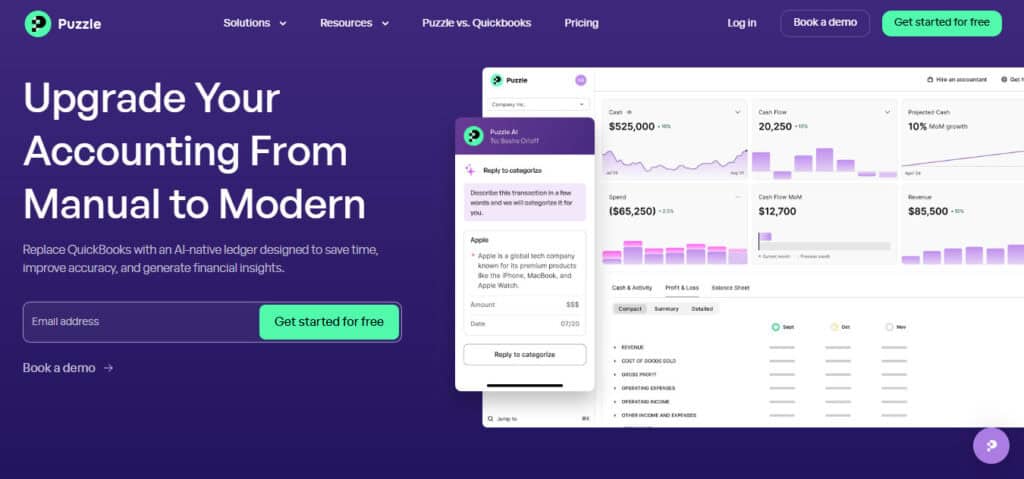
I’ll start with Puzzle because it’s a platform I’ve worked with in depth, and it has quickly become one of the most intuitive options for depreciation tracking. While it markets itself as a broader financial operations platform, its fixed asset and depreciation features stand out.
What I appreciate most as a CPA is how seamlessly Puzzle integrates depreciation into the bigger financial picture. Too often, I’ve had to bolt on separate asset management tools to standard accounting software (I hate using spreadsheets for this application, and have done it many times). Puzzle eliminates that friction.
Here’s what makes it effective:
- Automated schedules: You can set up straight-line or accelerated methods, and the system posts entries without constant oversight.
- Audit-ready records: Each asset has a clear history, making year-end reviews and tax audits far less stressful.
- Integration with close workflows: Because depreciation entries flow into Puzzle’s month-end checklists, there’s no scrambling at close time.
For digital business owners without a dedicated finance team, this level of automation saves countless hours. From my perspective, it also reduces error risk, something I’ve seen too often with manual Excel trackers.
2. QuickBooks Online

QuickBooks Online is the default choice for many small businesses, and with good reason. It’s accessible, familiar, and integrates with nearly every third-party tool. However, QBO’s core platform doesn’t offer robust built-in fixed asset management. To track depreciation properly, you often need the Fixed Asset Manager (FAM) add-on or a third-party app from the marketplace. This module starts at $250 a month, which is just way too pricey in my opinion to be able to access these options.
Strengths include:
- Widespread adoption: Almost every accountant knows QBO, so you won’t struggle to find support.
- Integration ecosystem: Tools like AssetAccountant or Sage Fixed Assets can plug into QBO for depreciation tracking.
The trade-off is complexity. Digital entrepreneurs who want depreciation to “just work” may find the extra layers cumbersome compared to more modern platforms.
3. Xero
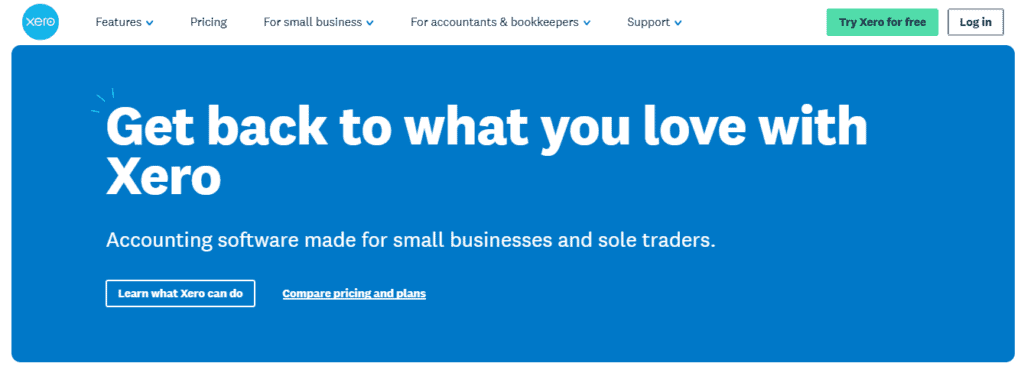
Xero has grown in popularity with startups and digital-first businesses because of its clean interface and strong integrations. Compared to QuickBooks, it feels more modern, and for companies working globally, its multi-currency support is strong.
When it comes to depreciation, Xero has a built-in Fixed Asset Module, which is a big advantage over QuickBooks. That means you don’t need an add-on to get started.
Key highlights:
- Built-in asset register: Each asset is tracked individually with purchase date, cost, and depreciation method.
- Multiple methods: Straight-line and diminishing value are supported, which covers most small business use cases.
- Automated postings: Each month, Xero can post depreciation entries automatically, keeping the ledger current.
The downside is that Xero’s fixed asset functionality is somewhat basic. If you’re managing hundreds of assets or need custom depreciation rules, you’ll find it limiting. Still, for many digital businesses with a handful of computers, cameras, or office build-outs, it’s more than enough.
4. Sage Intacct
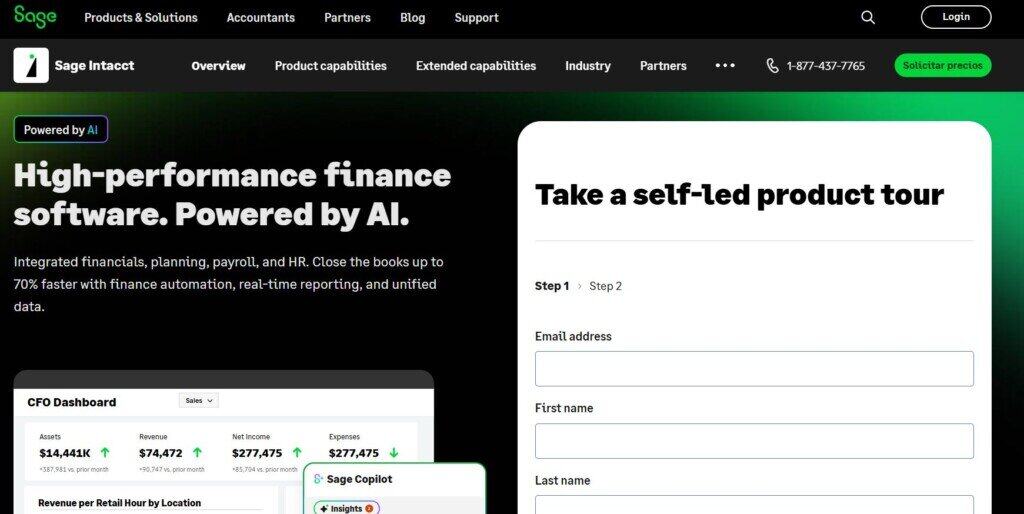
Sage Intacct sits in a different category. It’s built for growing businesses that have outgrown entry-level systems like QuickBooks or Xero. It’s not something you adopt casually—it’s an investment in a full accounting and ERP platform, and for that reason I really like Sage!
For depreciation, Sage Intacct shines because it provides enterprise-level fixed asset management. You can track assets across multiple locations, divisions, and even currencies. This is important for digital businesses scaling quickly or considering international expansion.
Some of the standout features include:
- Comprehensive asset classes: Vehicles, equipment, IT hardware, leasehold improvements, and more can all be managed under unique schedules.
- Custom depreciation rules: Beyond standard methods, you can configure rules for tax books, reporting books, or special GAAP adjustments.
- Tight integration: Depreciation flows directly into general ledger, accounts payable, and project modules.
From my experience, Sage Intacct is best suited to companies with dedicated finance staff. It’s powerful, but it requires trained hands to get the most out of it.
5. NetSuite
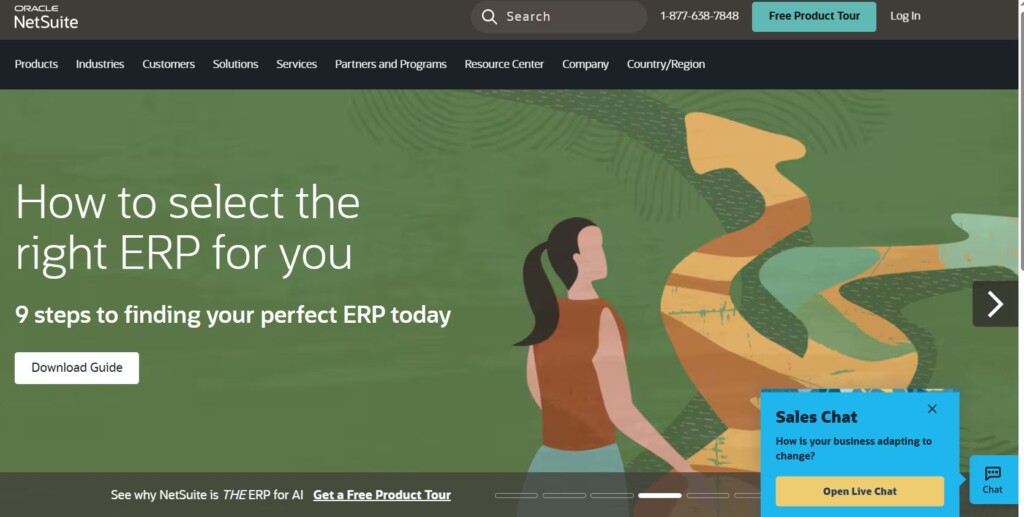
NetSuite is another step up the ladder. It’s a full ERP system owned by Oracle, and it offers extensive fixed asset and depreciation management. I’ve worked with clients who migrated to NetSuite when they crossed $20–30 million in annual revenue and needed a single source of truth across finance, inventory, and operations.
Depreciation in NetSuite is highly customizable. You can run multiple depreciation books in parallel—for example, one for tax and another for internal management reporting. That’s a huge advantage if you want to see how accelerated tax depreciation compares to straight-line for investor presentations.
Strengths include:
- Parallel books: Manage GAAP, tax, and custom books side by side.
- Complex asset support: Useful for businesses with large inventories of hardware or leasehold improvements.
- Global capabilities: If your digital business has subsidiaries abroad, NetSuite handles multi-entity and multi-currency setups well.
The trade-off is cost and complexity. For a small digital agency, NetSuite is absolute overkill. For a digital enterprise with global reach, it may be the right fit.
6. FreshBooks
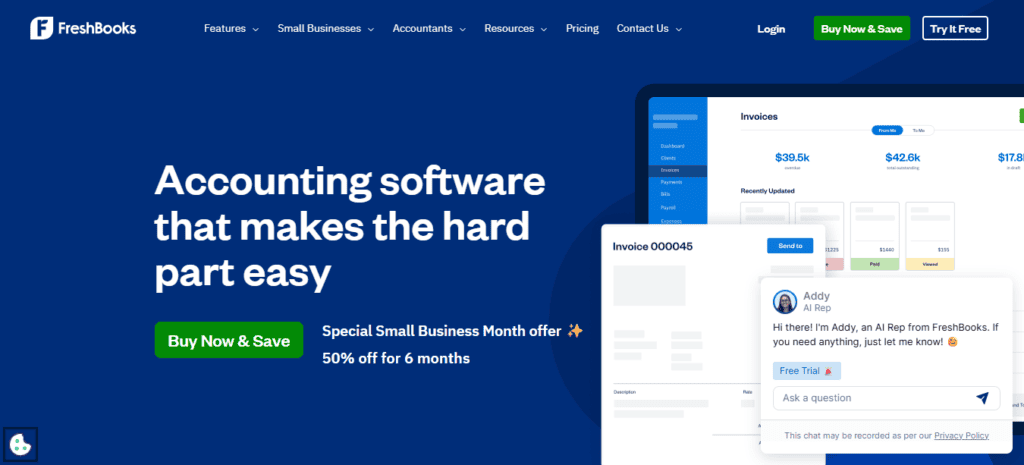
FreshBooks is often associated with freelancers and small service providers. While it doesn’t offer built-in depreciation tracking at the same level as Xero or Sage, it’s worth mentioning because of how lightweight it is.
For a solo digital entrepreneur, FreshBooks may be a good starting point. You can still track assets manually or integrate with third-party tools for depreciation. Its real strength lies in invoicing and expense tracking, not fixed assets.
I generally only recommend FreshBooks to business owners with very simple depreciation needs—maybe a laptop or two. Once assets grow in number or value, it’s better to migrate to a platform with native support.
Comparing Options
Depreciation tracking can look very different depending on the software you use. Here’s a quick comparison:
- Puzzle.io: Best for automation and simplicity; integrates depreciation into full financial workflows.
- QuickBooks Online: Widely used but requires add-ons for depreciation.
- Xero: Good built-in fixed asset module, best for small companies.
- Sage Intacct: Enterprise-level features, strong for growing companies with finance staff.
- NetSuite: Ideal for larger, complex businesses; overkill for small ones.
- FreshBooks: Lightweight option, suitable only for minimal asset tracking.
As a CPA, my advice is to pick a platform that matches your business stage. Startups often need simplicity and automation; mid-sized firms need scalability and control.
Practical Use Cases of Depreciation Tracking
To make this less abstract, let’s look at a few real-world scenarios where depreciation tracking makes a difference for digital business owners.
- Creative Studio Example
A video production company invests $100,000 in cameras, lighting, and editing rigs. Spreading that cost over five years helps them match expenses with revenues, making financials look less volatile. - E-Commerce Brand Example
An online store installs $40,000 of warehouse shelving and packing equipment. By depreciating the equipment, the owners lower taxable income in early years when cash is tight. - SaaS Company Example
A SaaS provider spends $200,000 on servers. Tracking depreciation accurately not only helps with tax deductions but also informs decisions about when to replace hardware before it becomes a bottleneck.
In each case, software like Puzzle.io or Xero automates what would otherwise be tedious manual work in Excel.
Common Pitfalls in Depreciation Tracking
In my practice, I’ve seen business owners make the same mistakes again and again when it comes to depreciation. These errors usually stem from either underestimating the importance of tracking or relying too heavily on spreadsheets that weren’t designed for it. A few examples stand out:
- Mixing capital expenses with operating expenses: Buying a $5,000 server isn’t the same as paying a $5,000 contractor invoice. The first needs to be capitalized and depreciated, while the second is expensed immediately. When this distinction is blurred, financials lose accuracy.
- Inconsistent methods: Switching between straight-line and accelerated methods without documentation creates messy books. The IRS doesn’t look kindly on arbitrary changes.
- Lack of reconciliation: I’ve seen clients list laptops in their “fixed assets” register long after they were sold or scrapped. Without reconciliation, the books show ghost assets.
- Ignoring tax vs. book differences: Sometimes depreciation rules for tax don’t match what’s best for management reporting. Software that can track both (like NetSuite) saves headaches at year-end.
These pitfalls are avoidable if you have the right systems in place. That’s why I encourage business owners to invest in software that makes depreciation part of the workflow instead of a year-end chore.
How I Evaluate Depreciation Software as a CPA
Over the years, I’ve developed my own framework for evaluating accounting platforms when clients ask, “What should we use?” I look for three things:
- Ease of Setup
Can a business owner (without an accounting degree) input their assets and choose a depreciation method without getting lost? If the answer is no, adoption will fail. - Automation
Does the system post monthly depreciation entries automatically? Can it handle both book and tax schedules if needed? Manual posting is a red flag. - Audit Trail
Is there a clear history of asset additions, disposals, and adjustments? When an auditor or potential investor looks at the books, I don’t want to scramble for explanations.
By these measures, Puzzle stands out. It offers automation, a clean audit trail, and smooth integration with close workflows. Xero also performs well for small businesses, while Sage Intacct and NetSuite shine for larger firms with more complex structures.
Future of Depreciation Tracking
Looking forward, I believe we’ll see depreciation tracking become even more automated and predictive. With AI advancing, platforms are already beginning to suggest depreciation schedules based on asset type and industry norms. I’ve tested early versions of this, and while not perfect, it shows promise.
Imagine buying a $25,000 server, uploading the invoice, and having your accounting software automatically recognize it as an asset, apply the correct useful life, and schedule depreciation entries. Puzzle is already nudging in this direction, and I expect others will follow.
For digital business owners, this means less time in the weeds and more time focusing on growth. It also reduces the risk of misclassification, which I’ve seen cost companies money in both overpaid taxes and investor confidence.
Who Should Use Which Software?
If I had to simplify the decision-making process, I’d break it down like this:
- Solo digital entrepreneurs or freelancers: FreshBooks or Xero. Keep it light. Don’t overcomplicate.
- Small digital agencies or e-commerce brands: Puzzle.io or Xero. Puzzle.io edges out for automation, Xero for affordability.
- Scaling companies ($10M+ revenue): Sage Intacct. You’ll appreciate the enterprise-level features once you outgrow entry-level systems.
- Large digital enterprises ($20M+ revenue): NetSuite. At this stage, depreciation is just one piece of a broader ERP puzzle.
The right choice depends on size, complexity, and appetite for change. I’ve had clients stick with Xero far longer than expected because it simply worked for them. Others jumped to NetSuite quickly because investor requirements demanded it.
Final Thoughts
Depreciation tracking isn’t glamorous. It’s not what most digital entrepreneurs want to spend time thinking about. But it matters. The right accounting software turns depreciation from an afterthought into a built-in process that supports accurate reporting, smarter tax planning, and better decision-making.
I’ve worked with every system mentioned here. Each has strengths. But if I had to recommend one platform for most digital business owners today, I’d point toward Puzzle. It strikes the right balance between automation, ease of use, and audit readiness. It doesn’t oversell itself, and it integrates depreciation into the bigger financial picture.
Other platforms absolutely have their place, and for certain companies, they may be the better fit. But Puzzle has made depreciation something you can set up, trust, and then stop worrying about. And in my book, that’s worth a lot.

